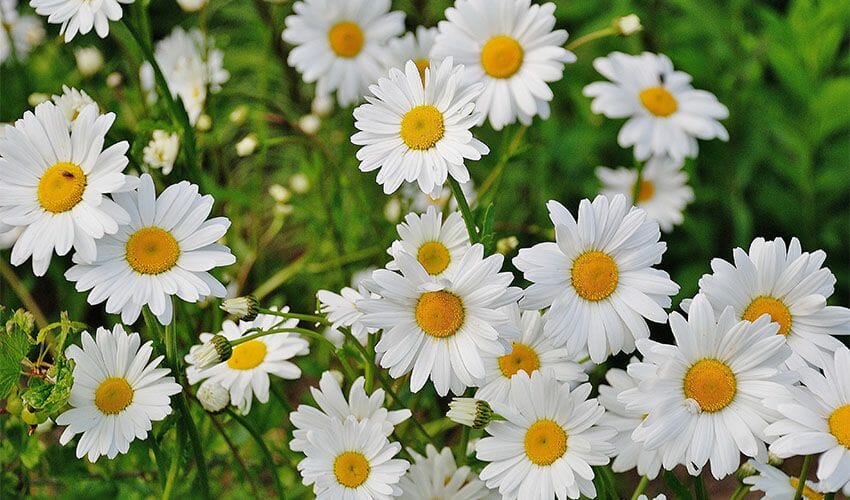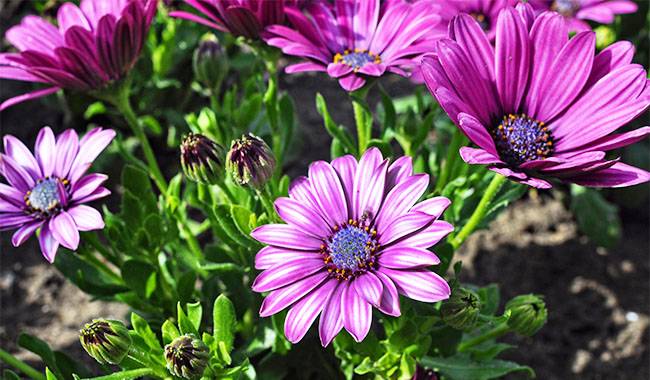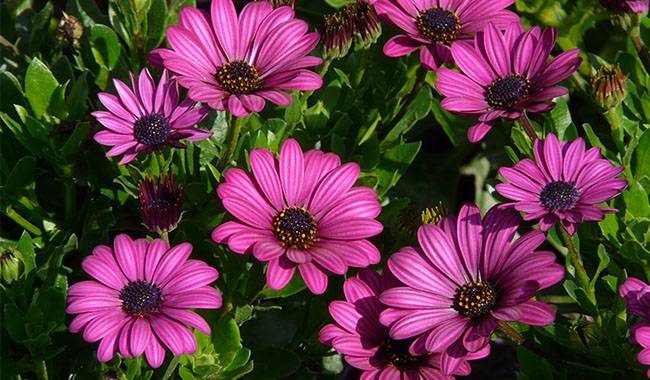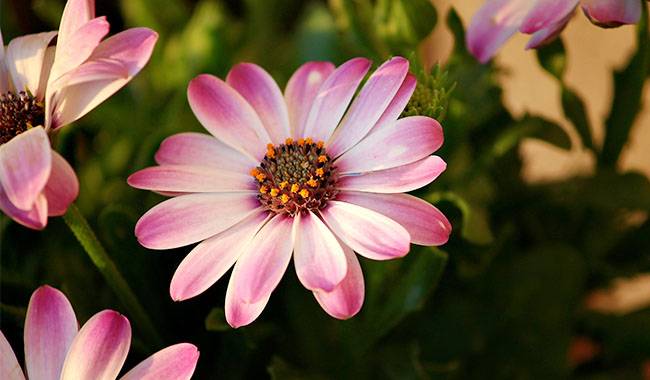
About Blue Eyed Daisies
Blue Eyed Daisies, also known as gerberas, have the advantage of having a dark blue disc in the center, surrounded by white, pink, or yellow radial flowers. Blue Eyed Daisies are native to South Africa. They grow as perennials in the U.S. Department of Agriculture Plant Hardiness Zones 10 and 11, but they can also be appreciated as summer annual plants in cool places. Daisies bloom from spring to autumn in mild summer areas. They thrive in dry soil environments, rarely suffer from pests and diseases, and they require very little care.
Blue Eyed Daisies show off natural pearl-like milky white flowers and a steel blue flower core, surrounded by a pale yellow band. The flowers form a tight hill at the top of the plant, showing the most impressive beauty.
The leaves of Blue Eyed Daisies are dark green and complement the flowers. Hybrid flowers (small disc-shaped flowers) have eye-catching shades of milky white, pink, pale yellow, orange, purple, dark blue, and red, and can grow to 4 inches in diameter.
When the spring rains begin gradually, most species, especially hardy ones, will bloom. But in the garden, Blue Eyed Daisies will get colorful effects throughout the summer.
Such plants are called delicate perennials, but they are usually grown as annuals. Just like most plants in the chrysanthemum family, Blue Eyed Daisies are also tough and can withstand heat and dry air.
But remember, some moisture can cause stellar flowers. The most intoxicating thing is that at night, Blue Eyed Daisies will close the flowers.
Blue Eyed Daisies can beautify flower beds and gardens. As long as there is plenty of sunlight, the best flowering period and lush leaves can be obtained.
They can also grow in rock gardens with dry air and in greenhouses.
Blue Eyed Daisies are not toxic to pets.
This is a new look for African daisies: the thick lavender dark blue center is surrounded by pale yellow and milky white! The blue-eyed beauty is a dramatic new attempt at the past, and you will love its unique color in gardens, containers, and vases Match and mix.
The center of the Blue-Eyed Daisies flower is actually the focus of special attention. Because it is different from all other flowers, it is a deep royal purple with subtle golden spots. It’s really beautiful, it is the perfect complement to the pale yellow flowers, and it will stand out in all circumstances.
BlueEyedDaisies can guarantee many flowering stems at the same time under most climatic conditions, from the end of spring to summer and autumn. If you live in a frost-free area, its flowers and leaves are evergreens!






